When non-Arizonians consider the Grand Canyon State, it's often in hues of red and orange"”oddly shaped rocks in a sea of sandy desert.
In truth, Arizona is a uniquely beautiful state, and the caves and caverns in Arizona are the most underrated part of its mysterious beauty.
Arizona caves are as extensive as they are awe-inspiring. Still, these caves get so little attention because of the Grand Canyon and the enormity of the surrounding attractions that draw tourists from around the country. Caves in Arizona are well worth considering if you're considering visiting the state.
If caving is on your mind, you'll find plenty of it in Arizona. Kentucky usually gets the spotlight when it comes to caves, especially the Mammoth Caves.
But you'll find that Arizona is every bit Kentucky's equal. With that being said, here's our list of the best caves in Arizona and what you should know about them.
| Table of Contents [Show] |
|---|
Affiliate links may be used in this post. I may receive a small commission at no extra cost to you if you use my affiliate link.
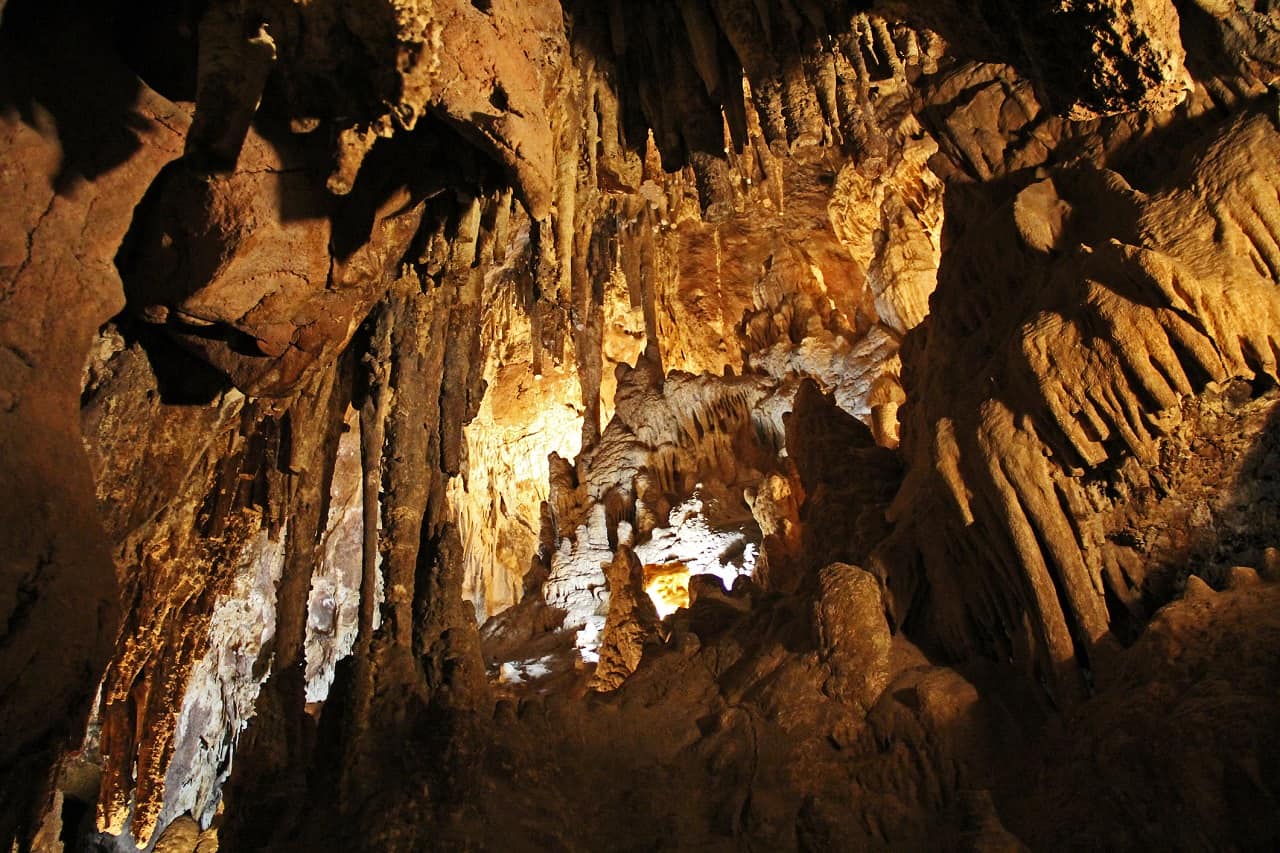
Though Colossal Cave is the primary focus of the park, the park itself is 2,400 acres of pristine Arizona beauty. It's one of those cases of awe-inspiring nature above and below, in every sense of the word.
Guided tours are the main draw to Colossal Caves, and you can choose from a variety of them. The cave system is extensive enough that no one tour is the same as the other. No matter which one you choose, you'll have to descend hundreds of natural steps into the heart of Colossal Cave.
Despite its name, you'll have to go through many tight-fitting spots throughout the tour. If you have trouble with claustrophobia, it may not be the tour for you.
Out of all the caves in Arizona, Colossal Caves is probably the best known, and it's surrounded by a massive park with even more to offer the curious traveler.
Address: 16721 E Old Spanish Trail, Vail, AZ 85641
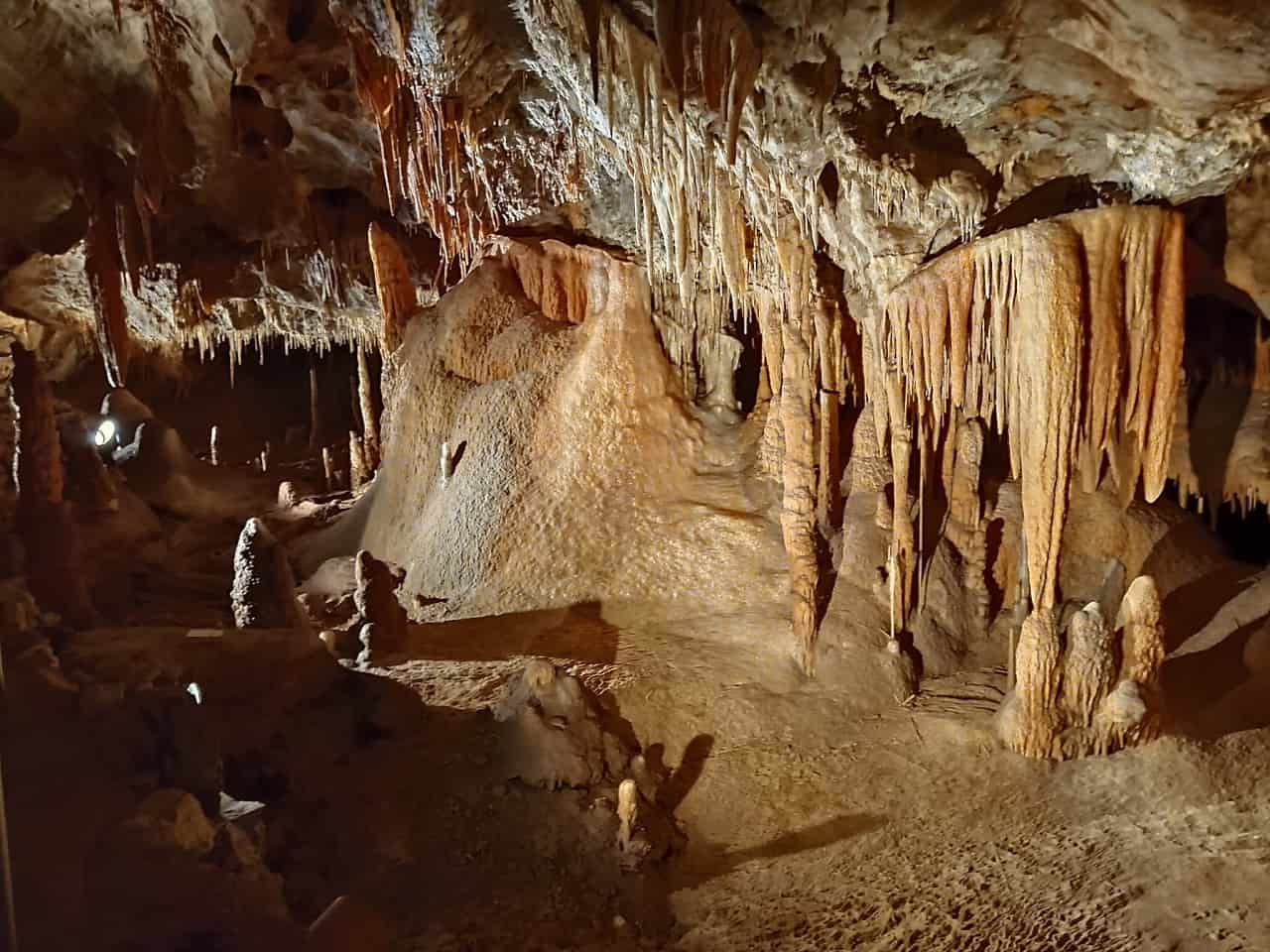
First discovered in 1974, Kratchner Caverns became the centerpiece of Kartchner Caverns State Park. If you love bats, you'll love Kartchner Caverns, as it's home to thousands of them. The caverns also have the largest known stalactite formation in the world.
Like many of the caves in Arizona, the official setup at Kartchner Caverns includes various tour types, meaning each tour explores a different portion of the cave. Some tours may interlink throughout, but they are entirely different experiences.
The Rotunda Tour, the Big Room Tour, and a special tour. The latter involves a true spelunking tour with helmets, headlamps, and the whole nine yards. The Rotunda Tour takes about an hour and a half, while the Big Room Tour takes about two hours.
Address: 2980 AZ-90, Benson, AZ 85602

Cave of the Bells is located in Coronado National Forest Sawmill Canyon. This is probably the most remote of all the caves in Arizona. To get there, you have to traverse back roads in a four-wheel drive vehicle. One of the warnings from past visitors' is the need for a high clearance in your 4WD vehicle.
That's not even the hardest part. You must also contact the main office and pay a $100 deposit, go to the office, pick up the keys, travel to the cave, and unlock the gate that keeps non-deposit-paying visitors out.
The good news is, once you're there, it's all you. There are no guided tours, so you're free to explore the cave as if you discovered it all on your own. In many ways, this is the best way to explore, with the feeling as if you have unlocked a previously undiscovered wonder of nature.
Address: Santa Rita Mountains, Patagonia, AZ 85624
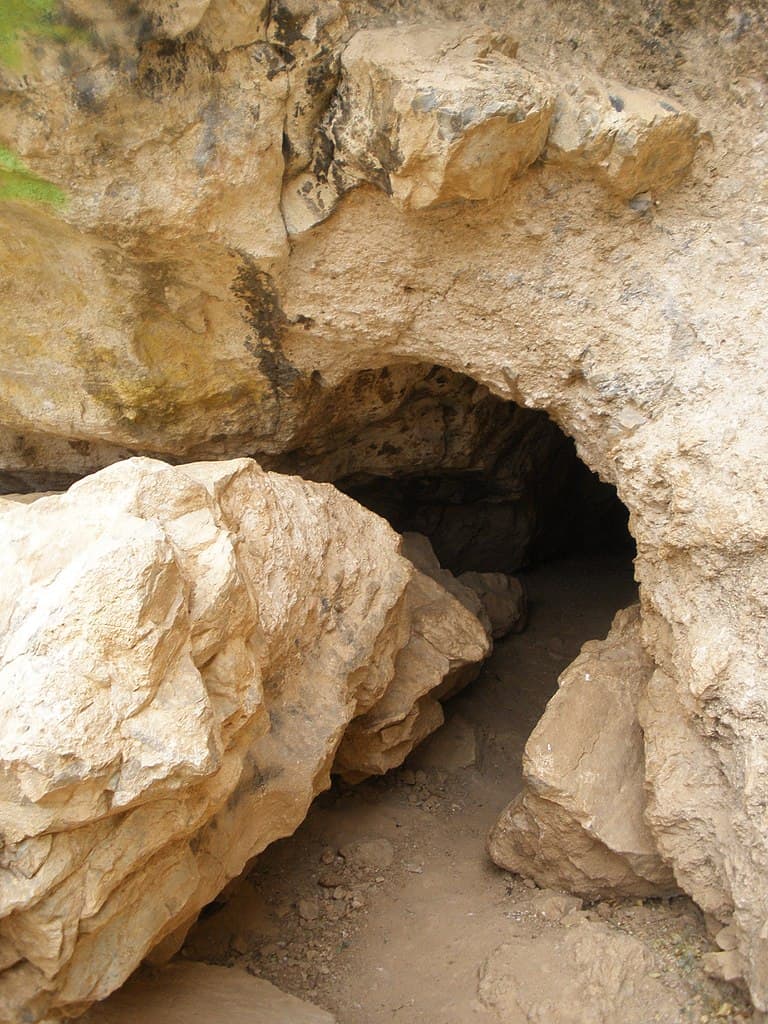
Another of the many limestone caves in Arizona, Peppersauce Cave, is like the Cave of Bells in that you are free to explore it on your own. The only difference is that the Peppersauce Cave is relatively easy to reach, and there's even a sign on the road directing you to the cave.
Another great reason to visit this cave is the lake you'll find within. This is cave exploration as close as possible to discovering it entirely anew. There are no amenities, no rails, no steps, and no indication of previous human presence to be found within the cave.
It's a good idea to bring a high-powered flashlight or a hard hat with a headlamp built-in. Locals also recommend taking some non-slip shoes with you as well. Water and lime rock combine for an insanely slippery experience.
Address: Peppersauce Canyon Trailhead, Oracle, AZ 85623
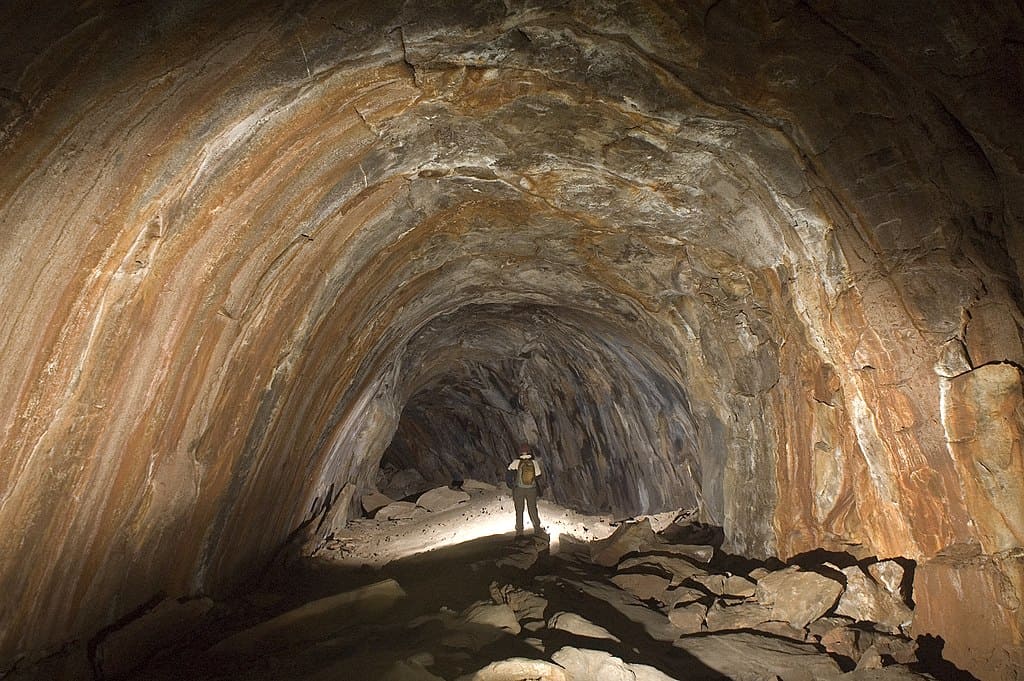
If you want to visit one of the more unique Arizona caverns, head to Coconino National Forest and enter the Lava River Cave. According to geologists, the cave was carved out by a volcanic eruption and lava flow over 700,000 years ago.
In places, it looks as if you are standing in a tubular cavern, burrowed out by some monstrous, underground worm. Ironically enough, considering how it was formed, this is one of the coldest caves you're likely to find in Arizona, with temperatures dropping low enough to form ice occasionally.
Like the two caves before it, there are no guided tours here. You’re expected to bring all of your own gear and look out for your own well-being while you’re in there. However, you shouldn’t let that scare you away from visiting one of the more unique caves in the US.
Address: 171B Forest Rd, Flagstaff, AZ 86001
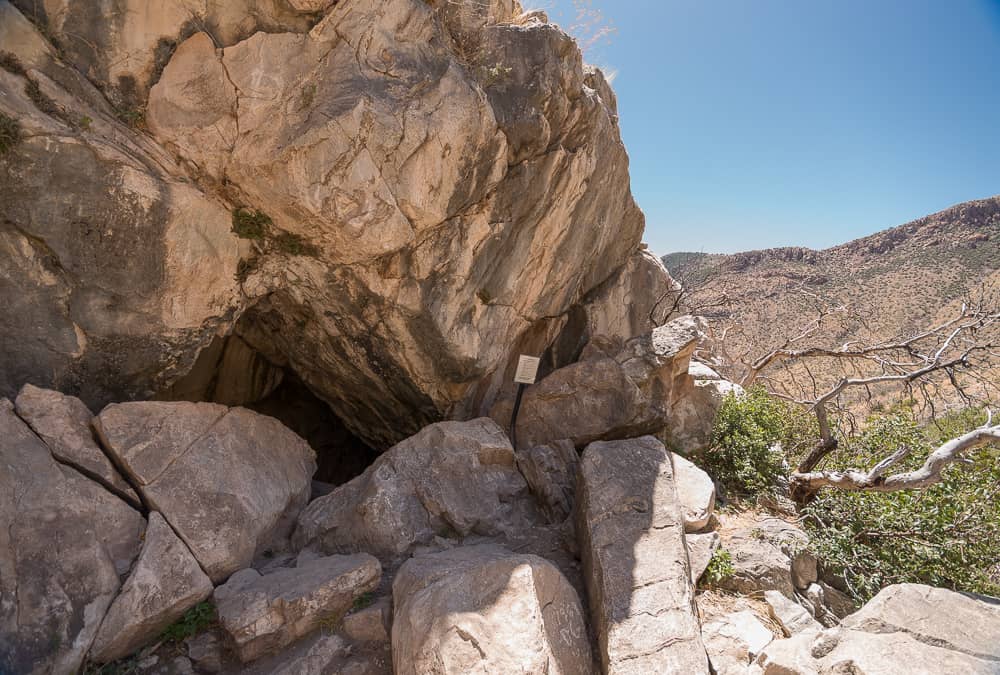
Coronado Cave is located close to the US border with Mexico. You won't have to drop an expensive deposit to enter the cave, but you will have to hit up the visitor center and get yourself a visitor pass before you attempt to enter.
Prepare yourself for a good little hike just to reach the cave. Once inside (tours are self-guided), you’ll have to walk, crawl, and descend roughly 1,200 feet to explore the better part of this Arizona Cave.
The Coronado Cave is a fantastic experience and well worth the hike. The cave is full of gigantic stalactites and stalagmites, and you're free to explore the cave entirely on your own. The surrounding countryside is also beautiful, so there is plenty for your eyes and mind to drink from beginning to end.
Address: 9P2Q+8M5, Hereford, AZ 85615
Also Read: The Best Caves & Caverns in the USA
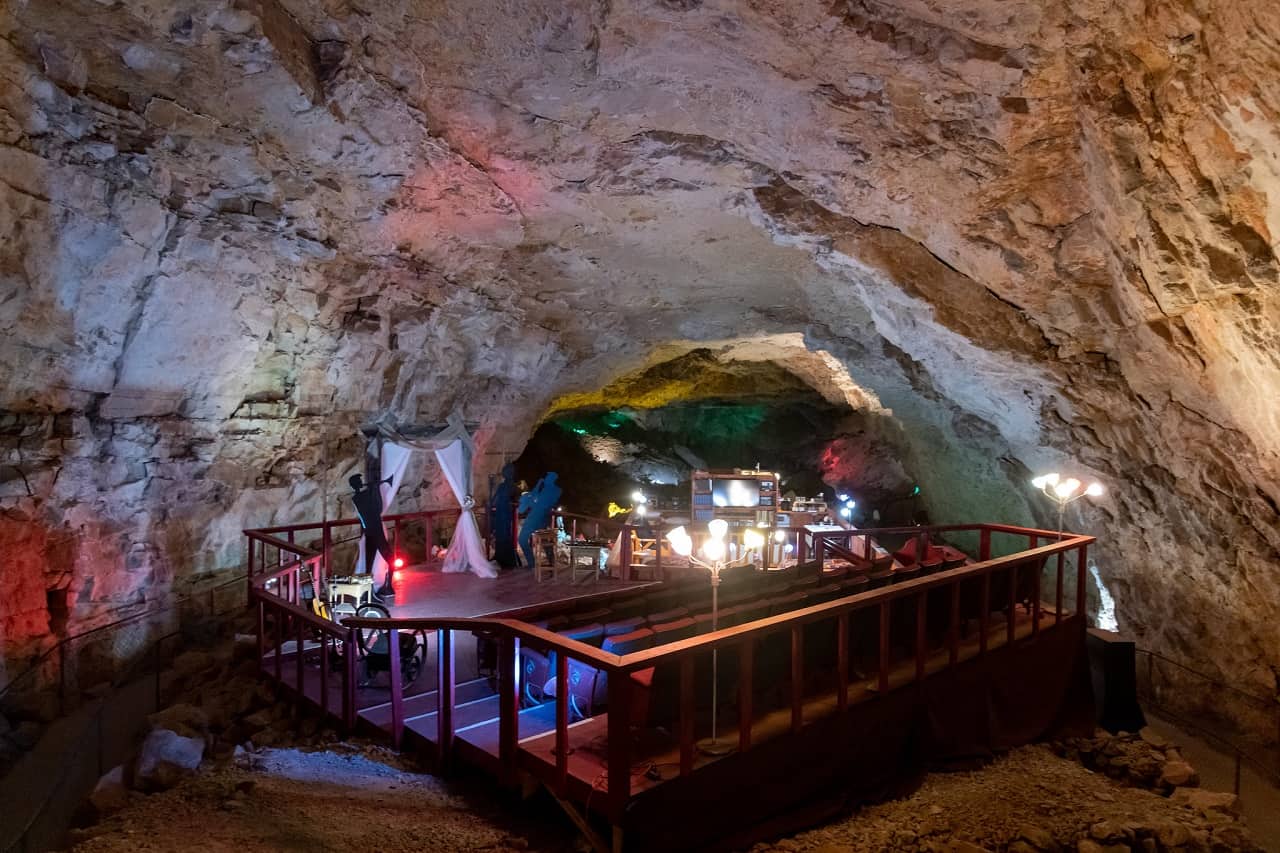
The title of the deepest cave in Arizona and the largest dry cavern in the United States goes to Grand Canyon Caverns.
It is one of the more exciting caves in AZ because you have to take an elevator down to explore it. Once you're at the bottom, there are a number of different walking tours available and even a hotel inside the cave, though it's not easy to book a room.
There are plenty of amenities and shops on-site as well. No matter what walking tour you take, this is an enormous cave system, and you can literally spend hours within, exploring every last nook and cranny.
Address: AZ-66, Peach Springs, AZ 86434
Also Read: The Best Things To Do In The Grand Canyon National Park

Onyx Cave is located close to the Cavern of the Bells, both of which are in the Santa Rita Mountains. The Onyx Cave’s unique feature is the mazelike exploration. There are tons of twists and turns found within.
This cave was once in a fairly dilapidated condition, thanks to locals in the area ruining the unguarded cave. Since then, it's been completely restored as best as humanity can restore something that’s entirely natural.
Escabrosa Grotto Inc. owns the caves, and you have to get their permission, along with the key to access the gate, if you want to explore the cavern on your own. Also, it's one of the more difficult caverns to reach, with some extensive hiking on the front end. So, prepare accordingly.
Address: Santa Rita Mountains, AZ
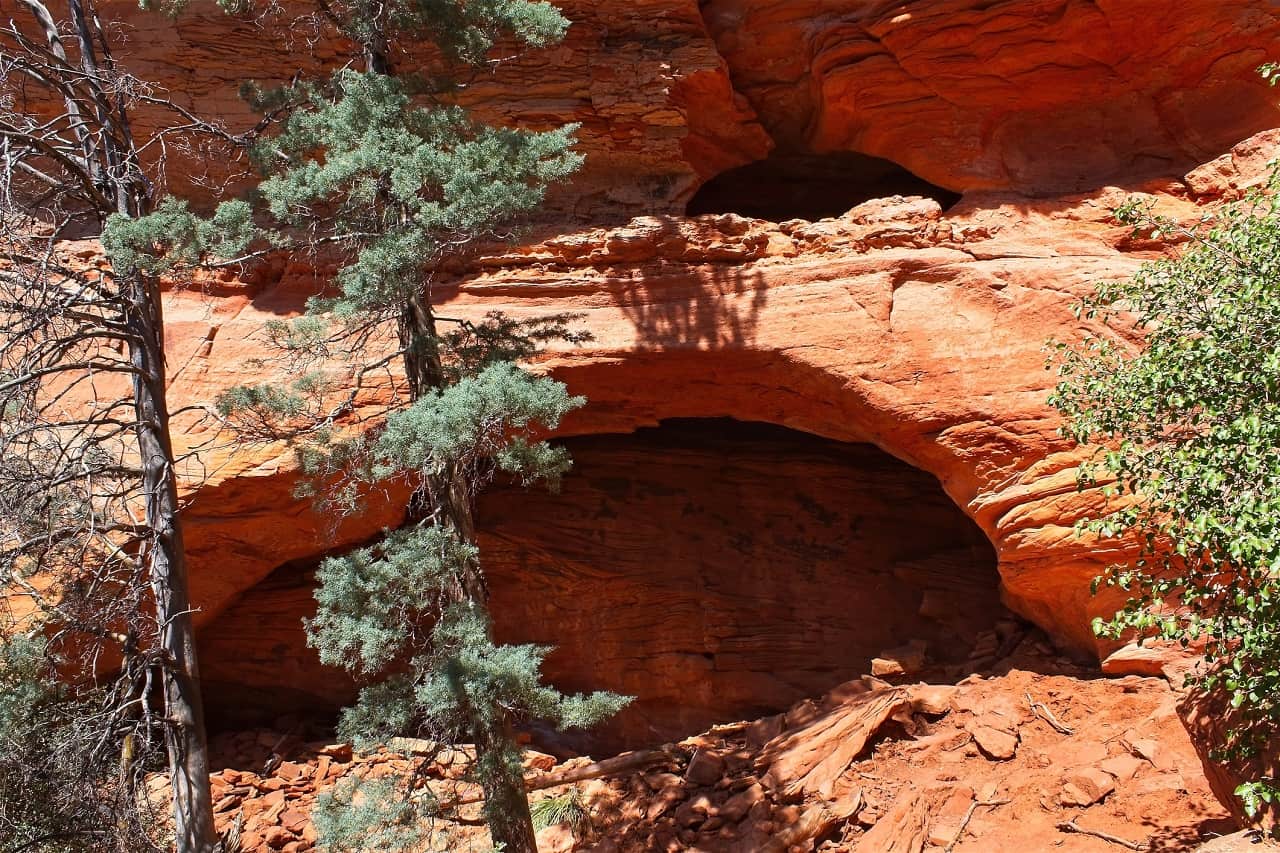
A big part of the Soldier Pass Cave in Arizona is the trail you have to hike before you get there. Known as the Soldier Pass Cave Spur Trail, it's about a 4.5-mile trek to get to the Soldier Pass Cave. However, it's not a brutal trail and happens to be one of the more popular portions of the trip.
It's also very easy to access since the beginning of the trail is just outside the town of Sedona. There aren't any amenities along the way, but with the town located so close to the trail and caves, you don't really need anything you can't find in Sedona.
The only drawback is that the trail is closed at nightfall, so you can only hike the trail and visit the Soldier Pass Cave (with that method) between 8 in the morning and 6 in the evening. If you can’t make the time, take the Jordan Road Trailhead and the Cibola Pass Trail instead.
Address: Forest Service 9904 Rd, Sedona, AZ 86336
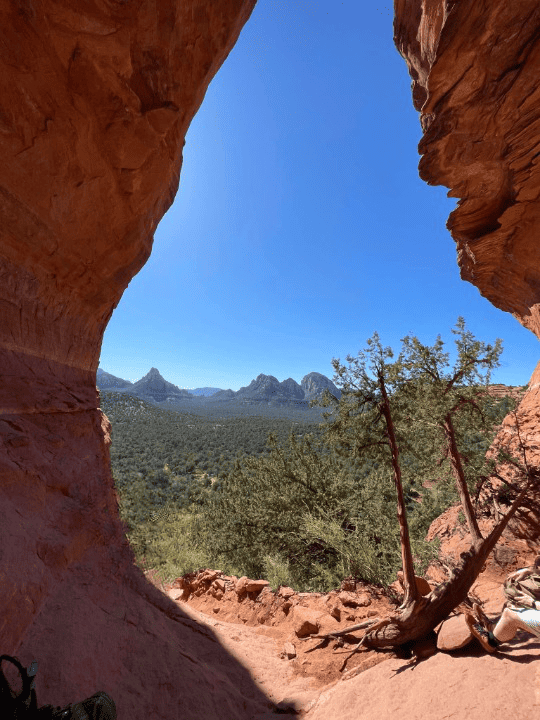
Sedona is rife with cave systems, as you will soon see, and the Birthing Cave is just one of the more popular among many. The opening to the cave is a huge diamond gap of red rock, making it pretty hard to miss.
Like many of the caves in Sedona and the entire state of Arizona, you have to hit the trail with your hiking shoes on to reach it. Most caves and caverns in Arizona are that way, making it a more interesting and adventurous exploration.
The cave itself is all about self-exploration, and it's uniquely situated with the opening facing to the east. If you are an early riser and don't mind hiking out there in the dark, you'll catch one of the most spectacular sunrises of your life (assuming the weather cooperates).
Address: Deadman's Pass Trail, Sedona, AZ 86336
Also Read: Top Arizona Attractions You Must Visit
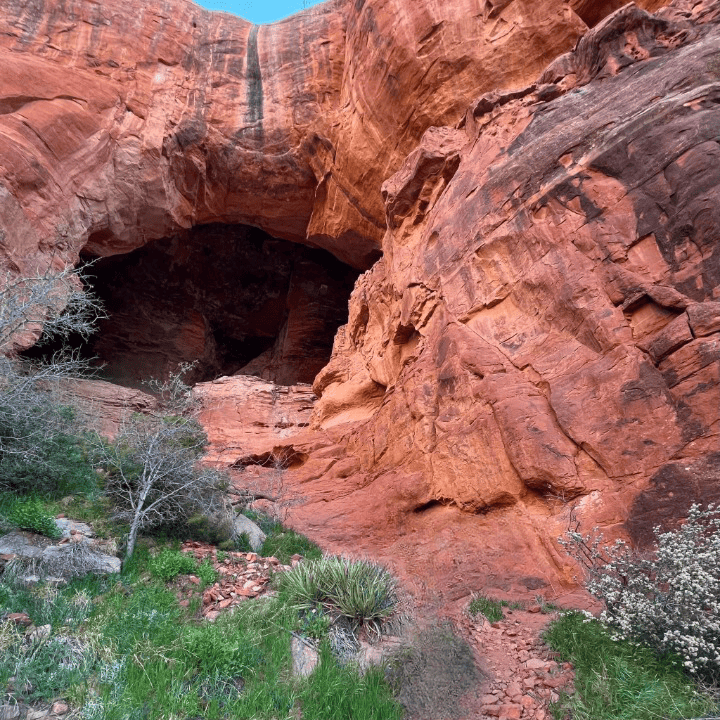
Yet another of Arizona’s top caves is located in Sedona. The Keyhole Cave is located on yet another trail"”this one is a 3.5-mile trek known as Sugarloaf Trail. It's a popular trail, and you will likely run into fellow hikers, bikers, and people out for a morning jog.
Sugarloaf Trail takes you to the Teacup Trail, and Thunderhead Trail is one of the markers for the cave entrance along the way (there are a lot of trails in Arizona!). You’ll also have to do a little bit of climbing to reach the cavern opening, so prepare yourself accordingly.
Keyhole Cave is entirely open to the public, and you can come and go, self-exploring until your heart is content. The cave itself is a lot like the birthing cave, featuring a large, obvious opening. Even the interior resembles the Birthing Cave as well.
Address: Teacup Trail, Sedona, AZ 86336
Also Read: Top Sedona Attractions You Must Visit
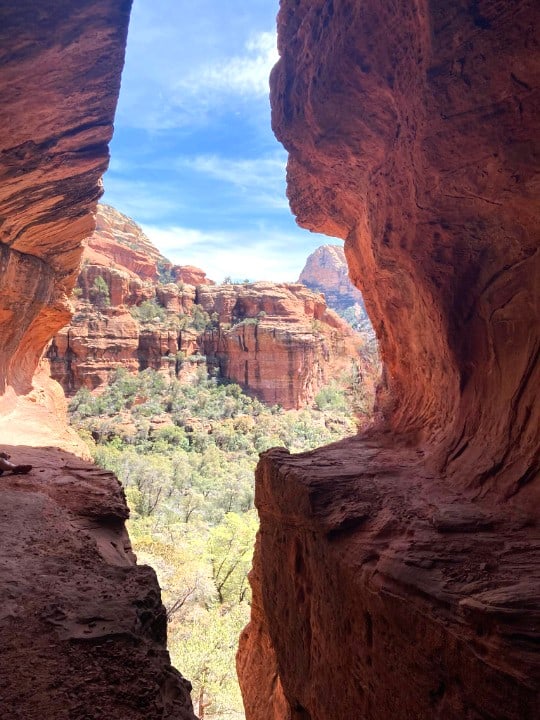
Like many of the caves in Sedona, Boynton Cave is entirely unmarked, open for self-guided tours, and reachable via a trail or a number of trails. In this case, you’ll have to take the Boynton Canyon Trail to reach the cave.
Boynton Cave features a ledge that runs along the interior, and it's a lot of fun to spend the extra time climbing around, above, below, and through the entire cave. It's truly a sight to see. If you're unused to self-guided tours, Sedona and the whole state are full of these kinds of adventures.
Just outside of the cave are some Native American ruins that are well worth taking the time to explore further. The central aperture in the Boynton Cave is its most well-known feature. While Boynton Cave is famous, it's not always easy to reach, so you may have everything to yourself.
Address: Boynton Canyon Trailhead, Sedona, AZ 86336
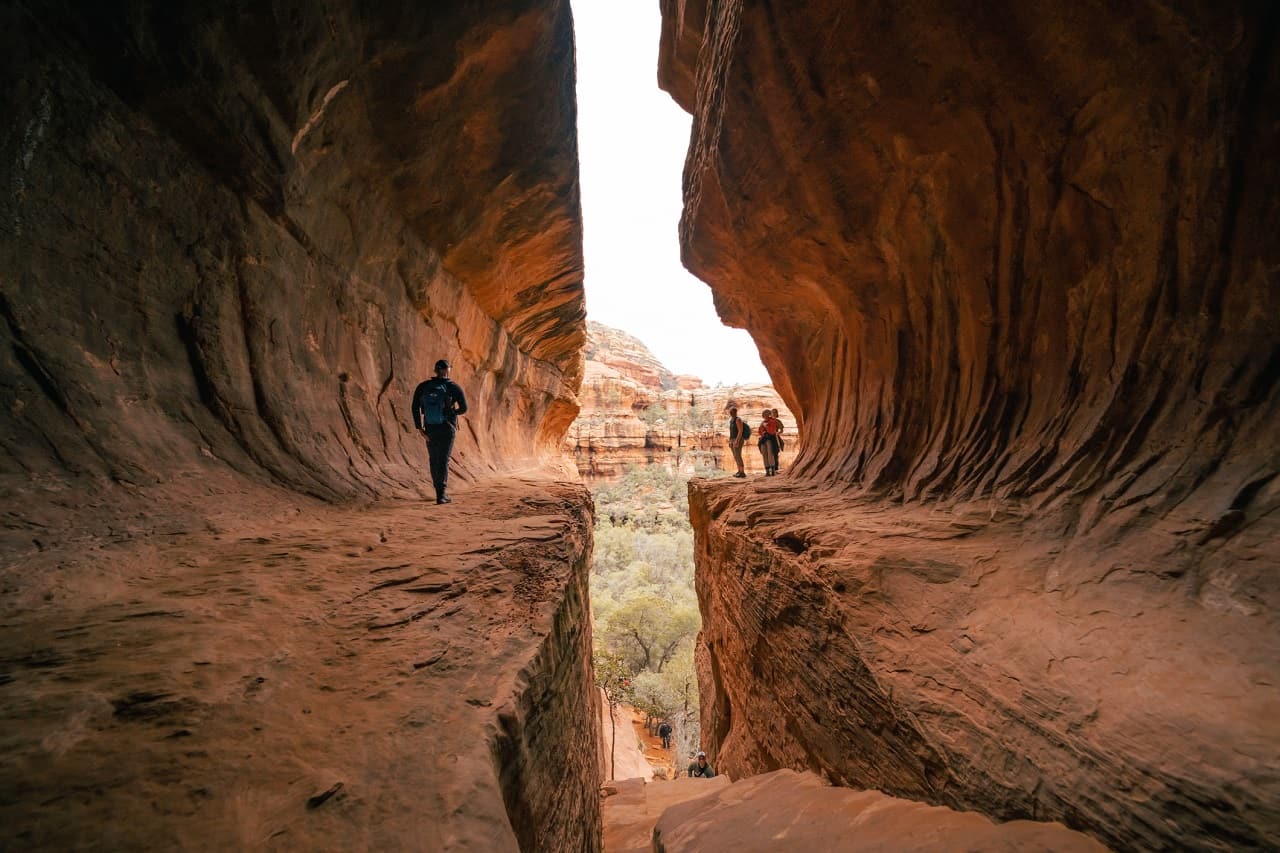
The Subway Cave is directly adjacent to the Boynton Cave, and you can easily take the trailhead up to either one and explore both in short order. Like the Boynton Cave, the Subway Cave features unique, naturally carved walls that you can navigate if you choose to do so.
Everything mentioned above, on the Boynton Cave, is found here too, including the Native American ruins. In fact, if you hike up to the Subway Cave, you will probably end up exploring both caves, along with the ruins.
Neither cave is extremely large, so unless you prefer one cave over the other, you'll have more than enough time in a single day to explore both. One thing is for sure, the views are stunning, both inside and outside of either cave.
Address: Long Canyon Trail, Sedona, AZ 86336
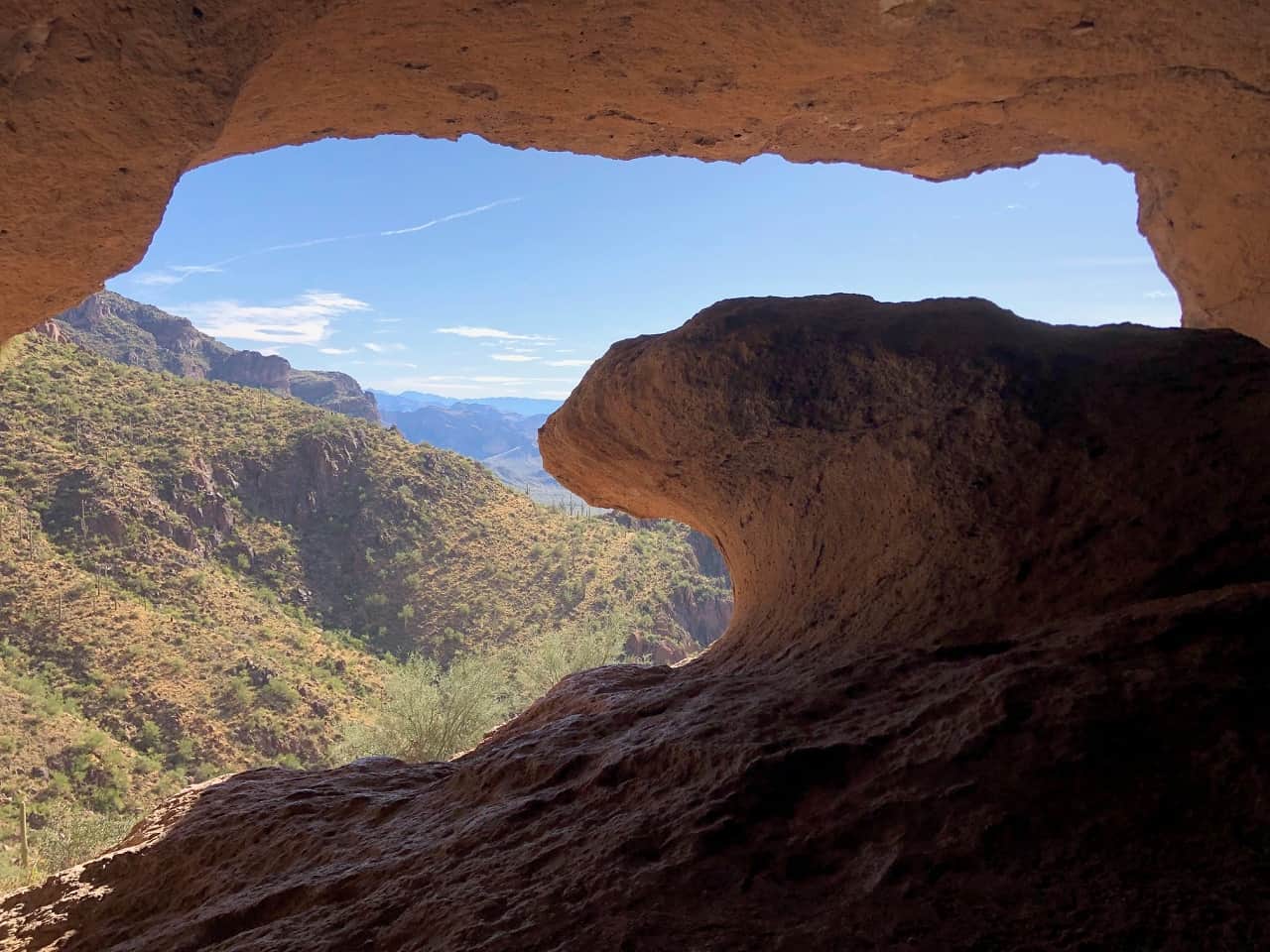
The Wave Cave sits on the end of the Wave Cave Trail in Gold Canyon, Arizona. It got its name from one of the more unique rock formations found in nature. The rock forms a wave shape, with the cave ceiling looming directly overhead.
The space between the crest of the rock wave and the ceiling is close enough for an adult to climb up and stand on one while touching the other. The hike up to the cave is fantastic, if you're into a lot of hiking, that is.
The surrounding countryside is beautiful, though it's a lot more green than the reds and oranges Arizona is known for. The area is both mountainous and full of rolling hills that go on as far as the eye can see. There is probably no better place on the continent to watch the sun rise or set.
Address: CJ2F+M4, Gold Canyon, AZ 85118
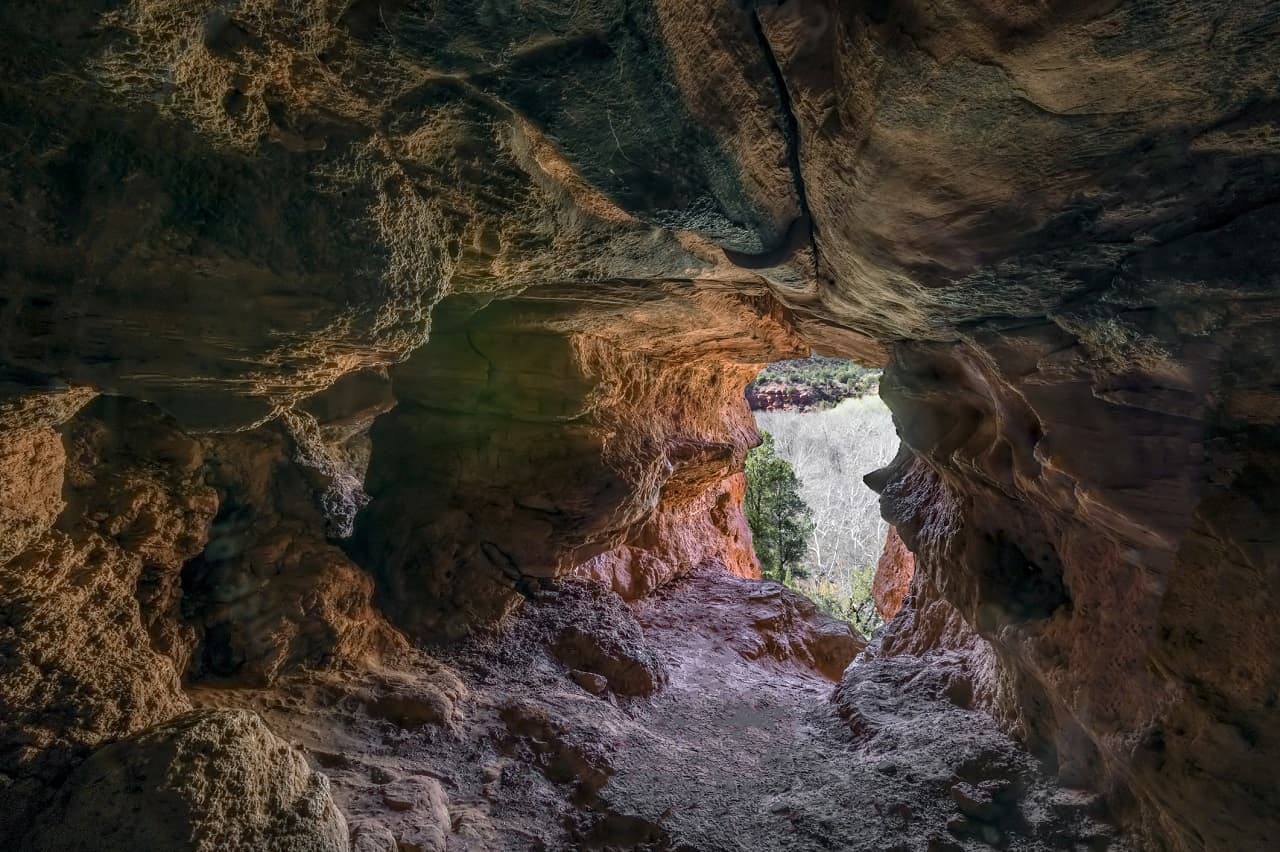
Last but not least, the Wind Cave in Meas, Arizona, features yet another trail. Sensing a pattern yet? Fortunately, these trails are absolutely gorgeous to traverse and experience. If you could pack every single one of them into your vacation list for the next few years, you should do so.
To enter the park and head up Pass Mountain, you'll have to fork over a $7 fee, but the price is more than worth the experience. It's a nearly 3-mile trek, and the trail itself can be rough at times, but it's nowhere near something only an expert hiker could handle.
Wind Cave is less of a cave and more of a very deeply recessed alcove. However, don’t let that deter you. It's an entirely self-guided adventure into nature at its most stunning. The sights and sounds you’ll experience on the way are more than worth the effort.
Address: Wind Cave Dr, Mesa, AZ 85207
Many of the caves on our list are entirely open for self-guided tours or exploration. There won’t be professionals or park officials there to guide you along the way. If you’ve never been into hiking, mountaineering, or spelunking, there are some tips you should follow to properly prepare yourself for the journey.
As long as you keep those things in mind, your first cave adventure should be an impressive and unforgettable experience. One of the most important things you can do is watch the movie 127 Hours. The film takes place in Utah, but it's more than pertinent to mountaineering, canyoneering, and spelunking in Arizona.
The movie has some very important lessons to offer, such as always letting someone know where you are going and when you will get home. Bringing along GPS equipment, especially Garmin devices designed to send out an SOS if you're in trouble, is always a good idea.
Kratchner Caverns is the largest cave in Arizona, even though inexperienced spelunkers often point to Colossal Caverns, mostly because of its name. Not only is Kratchner Caverns the largest in Arizona, but it also contains the largest stalactite formation in the world.Â
Tennessee is the state with the most caves in the United States. There are over 10,000 caves in the state of Tennessee, and the vast majority of them are located in the eastern half of the state. There are still many popular ones in central and west Tennessee, with Ruby Falls being the most popular.
While there is not an exact number of caves listed for Arizona, there are over a thousand known caves throughout the Grand Canyon State. When it comes to Arizona, it's not necessarily the number of caves but their uniqueness that makes them so popular.
There are a lot of caves near Phoenix, Arizona, and none of them stand out as the most popular. That's mainly because they all offer something unique, along with the trail associated with it. The Wave Cave and Broadway Cave are probably two of the most well-known in the area.
The cave systems dotted throughout Arizona are magnificent, unique, and beautiful. It's hard to sum up the variety of experiences to be found there with just words on a page. If you love the outdoors, hiking, and caves, you owe it to yourself to head out to Arizona and see what the state has to offer.
Some of the caves on the above list are harder to reach than others, but there is certainly enough variety that you can bring your kids along for the ride as well. The most important thing is to prepare accordingly, stay safe, and enjoy Arizona's incredible natural sights.